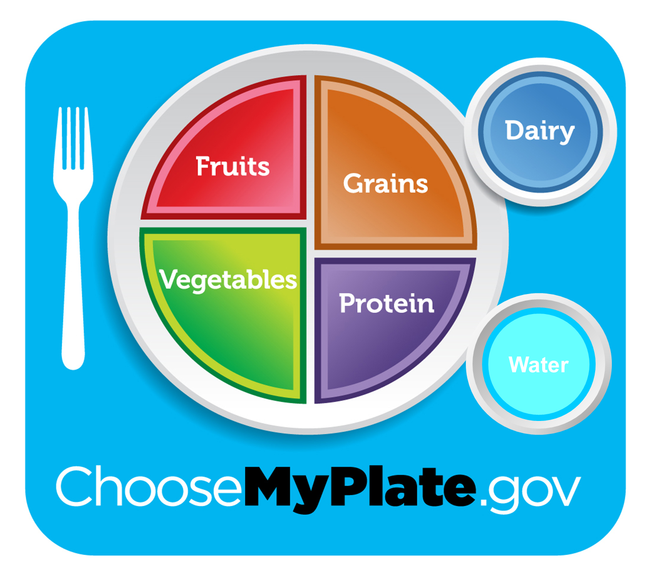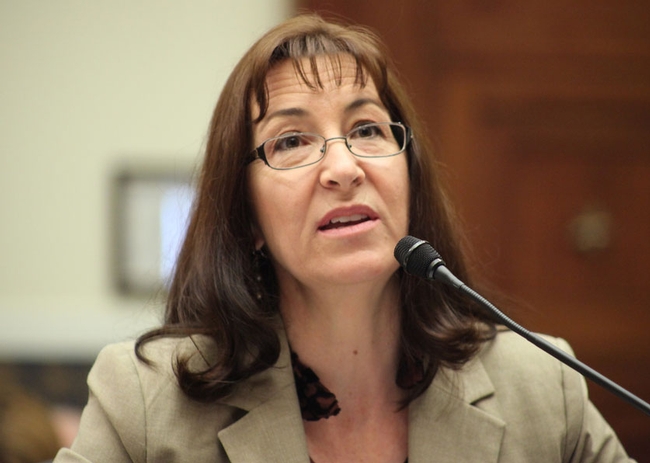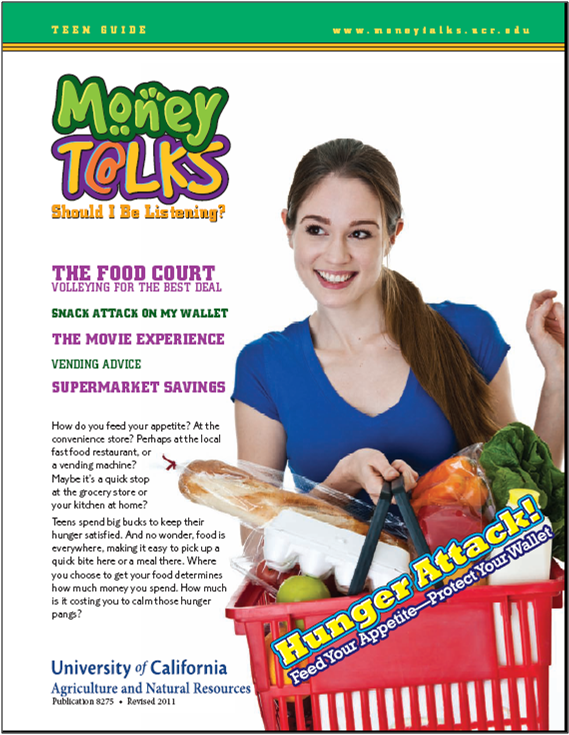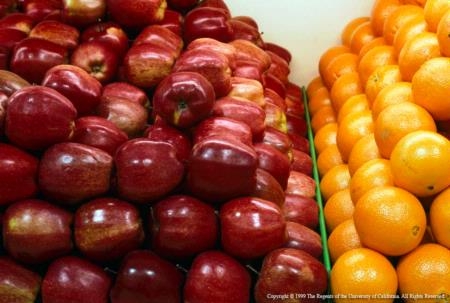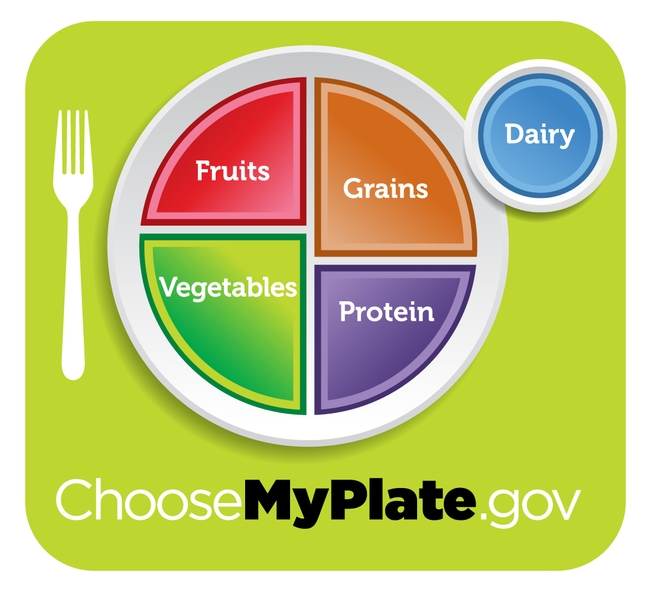Posts Tagged: MyPlate
Scientists ask USDA to add water to MyPlate
Ritchie has joined with dozens of nutrition and health professionals around the country to ask that the USDA put water onto MyPlate.
“We don't have all the answers to overcoming obesity, but the research on sugar-sweetened beverages is very clear,” Ritchie said. “When you drink beverages like soda, sports drinks or punch, the sugar gets absorbed very rapidly and the body doesn't recognize the calories. The result is excess calories and weight gain.”
The USDA introduced MyPlate in 2011 to reflect the message of its Dietary Guidelines for Americans, 2010. Federal law requires that the guidelines be reviewed, updated and published every five years.
“USDA officials say that, in order to change MyPlate, there must be more information in the dietary guidelines about water,” Ritchie said. “We are working through the public comment process to ask the advisory board to promote water as the beverage of choice.”
The ultimate goal – a new water icon on MyPlate – is important because of its high visibility. MyPlate is found on elementary school classroom walls and cereal boxes; at community gardens and the grocery store produce aisle.
In preparing for a visit with USDA officials at their Washington, D.C., headquarters, Christina Hecht, UC Nutrition Policy Institute coordinator, asked UC Cooperative Extension specialists in California for input on MyPlate. Their enthusiasm was unanimous.
“They see MyPlate as the face of the dietary guidelines and are very supportive of using the image as a teaching tool,” Hecht said. “They also supported the idea of adding a symbol for water.”
She shared the California educators' thoughts on MyPlate with her USDA contacts. “When they get a story from the field, it really matters to them,” Hecht said.
Ritchie and her colleagues around the country submitted a “Best of Science” letter to the Dietary Guidelines Advisory Committee imploring them to strengthen the language for drinking water.
“Current research indicates that children, in particular, are subject to ‘voluntary dehydration' from low intake of plain water,” the letter says. “Between 2005 and 2010, more than a quarter of children aged 4 to 13 years old in the U.S. did not have a drink of plain water on two consecutive days.”
Instead, they are drinking sugary beverages. National surveys in the early 2000s found that, on any given day, 84 percent of 2- to 5-year-old children drank sugar-sweetened beverages like sodas, sports drinks and fruit punch. The calories amounted to 11 percent of the children's total energy intake.
- Sugar-sweetened beverages – including sodas, juice drinks, pre-sweetened tea and coffee drinks, and fortified or energy drinks – are among the top sources of calories for children and adolescents.
- Between the late 1960s and early 2000s the consumption of sugar-sweetened beverages doubled.
- While the American Heart Association recommends no more than 6 teaspoons of added sugars per day for women and 9 teaspoons per day for men, the average U.S. consumption is 17 teaspoons per day.
- Low-income populations have higher intakes of sugar-sweetened beveragesand Latino children drink more of them than white children.
- Cardiovascular disease, present in more than one-third of American adults, is now understood to be exacerbated by the inflammatory effects of excess sugar consumption.
- Excess sugar consumption is a risk factor for non-alcoholic fatty liver disease, a precursor to diabetes.
Best of Science Letter
MyPlate revealed: One year later
One year ago in June, the USDA unveiled the new food icon, MyPlate. Based on the 2010 Dietary Guidelines for Americans, MyPlate was created to remind us to make healthy choices at mealtime and to visit the website to get more information. This new, improved and simplified version of MyPyramid was an exciting development for dietitians like myself. No longer would we have to explain to the public what those abstract yet colorful bands represented on MyPyramid. The plate is simple and and gets right to the point, and is a great teaching tool in my opinion.
The beauty of MyPlate is that the graphic is simple, but the website is incredibly rich in information for the public and professionals alike. My favorite feature on the website is the SuperTracker, where you can get a personalized nutrition and physical activity plan. SuperTracker can become your virtual nutrition coach, urging you to meet your health goals through weekly emails.
There is also a great series of handouts called Ten Tips Nutrition Education Series. These free downloadable handouts are created in English and Spanish to help consumers get started toward a healthy diet. There are 20 different topics available now, and even more to come later.
In June, my colleague and I had the pleasure of presenting MyPlate resources and activities to home economics teachers attending a conference in Garden Grove, Calif. We encouraged the teachers to connect with their local UC Cooperative Extension office where the nutrition education professionals have developed creative MyPlate activities to supplement existing nutrition education curricula.
I also knew the home economics teachers would be interested in Hunger Attack. Hunger Attack is part of the MoneyTalks for Teens financial literacy education series developed by UC Cooperative Extension's Consumer Economics specialist and advisors. This resource is designed to teach teens how to make healthier choices and to save money when shopping for food, and has been updated with the MyPlate icon. This resource is made available to educators by visiting the MoneyTalks for Teens website and requesting a password, or contacting the local UC CalFresh Nutrition Education Program or Expanded Food & Nutrition Education (EFNEP) program, both operated by UC Cooperative Extension.
Here's to a successful first year with MyPlate and a job-well-done to the educators and nutrition professionals who have worked so hard to extend these valuable resources to our schools and communities!
Beyond New Year's resolutions: tips for good health
Oh January 1st, how I hate you. If you’re like me you’re still recovering from the month long holiday food hangover. With three months until spring and swimsuit season on the horizon, you’re feeling the pressure to lose the winter coat! As always, you make that infamous New Year’s resolution: TO LOSE WEIGHT!
“Gym membership here I come!”
“I will not touch another carb for the rest of the year!”
“No sweets ever again… after this one!”
“I’m on a new diet, I eat nothing and when I feel like I’m going to faint I eat a cube of cheese!”
Okay the last one is my favorite quote from the Devil Wear’s Prada, but working in the health field I have found that sometimes people actually think that’s a solution. We find ourselves making resolutions that eliminate entire food groups from our diets, because we think it will help us lose weight. The thing most people don’t know or realize is that sometimes the absolutes we make can be very harmful to our health, and in the long run can actually cause us to gain the weight back plus more.
So this year, let’s make an attainable, realistic goal. Here are three tips selected from www.choosemyplate.gov, to have a healthy year!
- Put a positive spin on it – instead of saying “I can’t eat any sweets at all!” try a few “I will” statements on for size:
- I will add 1 serving of fruits and vegetables to each meal.
- I will make half of my grains whole.
- I will choose water or low-fat milk more often.
- Build a healthy snack – instead of buying the expensive processed snacks, try these healthy tips:
Combine fruit and a dairy food for the morning munchies:
- Apple and cheese
- Banana and yogurt
Combine vegetables and a protein food for a p.m. pick-me-up:
- Celery and peanut butter
- Carrots and almonds
Combining these foods will help you stay fuller longer while increasing your nutrient consumption.
- Don’t discount physical activity – being healthy isn’t about just what you eat. Adults need 30 minutes of physical activity a day and children need 60 minutes. Just because you don’t have a gym membership doesn’t mean you can’t be physically active. Remember that 30 minutes can be broken up throughout the day.
Here are some tips to increase your physical activity incrementally, without breaking the bank:
- Start a walking club with your co-workers, neighbors or friends. You’re more likely to do it if someone keeps you accountable.
- Do what you like! If you hate to run, don’t do it. There’s no use in driving yourself crazy doing something you hate. If you like to dance, then turn the radio up and have fun!
- Do stretches, exercises, or pedal a stationary bike while watching television.
Remember to always consult your physician before beginning a rigorous exercise regimen.
May your new year be full of realistic, attainable, resolutions! Keep it positive. Select healthy snacks that help you stay full longer. Get moving so you have more energy during the day. For more information and health tips visit www.choosemyplate.gov.
Wishing you all a very healthy 2012!
USDA unveils 'MyPlate' nutrition icon
The USDA today introduced a simple and clear visual to guide Americans when filling their plates at mealtime. The new MyPlate nutrition icon, which replaces the familiar 'MyPyramid,' shows how to build a healthy meal based on the USDA 2010 Dietary Guidelines for Americans.
"As a mom, I can already tell how much this is going to help parents across the country," said First Lady Michelle Obama in a live-streamed news conference this morning. "When mom or dad comes home from a long day of work, we're already asked to be a chef, a referee, a cleaning crew. So it's tough to be a nutritionist, too. But we do have time to take a look at our kids' plates. As long as they're half full of fruits and vegetables, and paired with lean proteins, whole grains and low-fat dairy, we're golden. That's how easy it is."
Obama acknowledged that MyPlate won't end the epidemic of childhood obesity on its own.
"This can't ensure that the community has access to affordable fruits and vegetables. There's still work to do," she said. "It can't spur kids to get up and move. There's still work to do. But we can build momentum with MyPlate. Today is an enormous step in the right direction."
At the press conference, Dr. Regina Benjamin, the US Surgeon General, said Americans needed a simple and easy tool to help them make healthy choices. She praised USDA's "tremendous effort to create a powerful, simple, understandable message."
'MyPlate' is a bold, colorful icon resembling a sectioned dinner plate. Separate fruits and vegetables sections combine to fill half the plate. The other half of the plate shows grains and protein. A circle representing dairy is off to the side.
In a video introducing MyPlate, USDA secretary Tom Vilsack encourages Americans to choose healthier food and balance it with exercise.
"Next time you sit down for a meal, before you eat, think about what's on your plate. In the months and years ahead, we hope MyPlate becomes your plate," Vilsack said.


